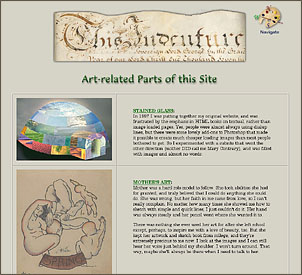A CRISIS in the ACADEMY's HISTORY.
When the National Academy's committee on site reported in favor of an amalgamation - or at least a close alliance -
with the Fine Arts Society, and a joint tenancy of the latter's headquarters on Fifty Seventh
Street, the suggestion, though unexpected, seemed at first glance an attractive one.
The united resources of the Academy and
of the bodies already established on the proposed site would, no doubt, have given New York
a splendid house of art; but it was scarcely reasonable to request the
Academicians to consent to a plan that involved the ending of their indepedent existence. With so long and distinguished
a history, with its present prestige, and with more than half a million dollars in bank,
it is not strange that the Academy should regard such a step as an uncalled for confession
of weakness, and should vote so emphatically to maintain its autonomy.
We hope to see an alternative presented that will establish it in quarters worthy of its mission
and its prospects, without submitting it to the loss of its identity.
It is a crisis at which boldness is the truest prudence, and ill advised economy could prove the sure
forerunner of decadence.
WHY VERESTCHAGIN LIVES IN PARIS.
It is well known that Paris is as great a center of Russian art as St. Petersburg or Moscow. Muscovite painters
seem to find the atmosphere of the city on the Seine more congenial than the keener airs of their native land.
There are other reasons for their expatriation, in some cases. Verestchagin, for instance, has been practically an exile from
Russia since his daring brush ventured upon subjects that offended the authorities. In one of his grimly realistic
renderings of an execution scene - a them that may be termed peculiarly Verestchaginesque -
he introduced the figures of Roussakoff, Michailoff, Jeliaboff, and Sofia Perofskaia, the four nihilists who were
hanged in St. Petersburg as accomplices in the murder of Alexander II. At about the same time he painted a characteristic
"Apotehosis of War" - a bitter satire on the glories of Russia's triumph over the Turks. It portrayed a huge and ghastly
pile of corpses, whose uniforms showed them to have been soldiers of the Czar and the Sultan, heaped together in death and decay,
while above the gruesome heap of victims to the ambition of monarchs a great vulture flapped its wings.
To satirize the heaven sent institution of military despotism, and to immortalize the features of the
unspeakable nihilist, are dangerous proceedings in the land of the Romanoffs. It would hardly do to send to the
Siberian mines a man whose genius is the pride of contemporary Russian art; but his offense was made so plain to
the daring artist that he found it advisable to remove to Paris, which has been his home ever since.
Verestchagin has seen many adventures in many lands, and of some of them he bears the marks in person.
His right hand was injured by a bullet during the Turkish war, and again, on one of his hunting expeditions,
by a leopard's bite. At another time, while sketching on the Steppes, he broke his right arm,
and was obliged to trust to peasant surgery for its setting.
THE METROPOLITAN MUSEUM'S GROWTH.
New York is to have the most magnificent art galleries in the world, according to the plans now definitely formulated
for the Metropolitan Museum. The institution's growth has been rapid, and its present
proportions are remarkable as the result of one generation's labor; but the existing building will be completely overshadowed
by the additions now contemplated. It will ultimately stand in the center of a vast series of galleries, which are to surround
it on all sides, fronting upon Fifth Avenue, and inclosing a total space of about eighteen acres.
With a million dollar appropriation, and plans that were drawn by the late Richard M. Hunt just before
his death, the Fifth Avenue front is to be commenced at once.
The facade is to be of marble and classical in style; and the trustees promise that it will be a new ornament
to the city, as it certainly should be.











![]() Copyright © 2007, Mary S. Van Deusen
Copyright © 2007, Mary S. Van Deusen